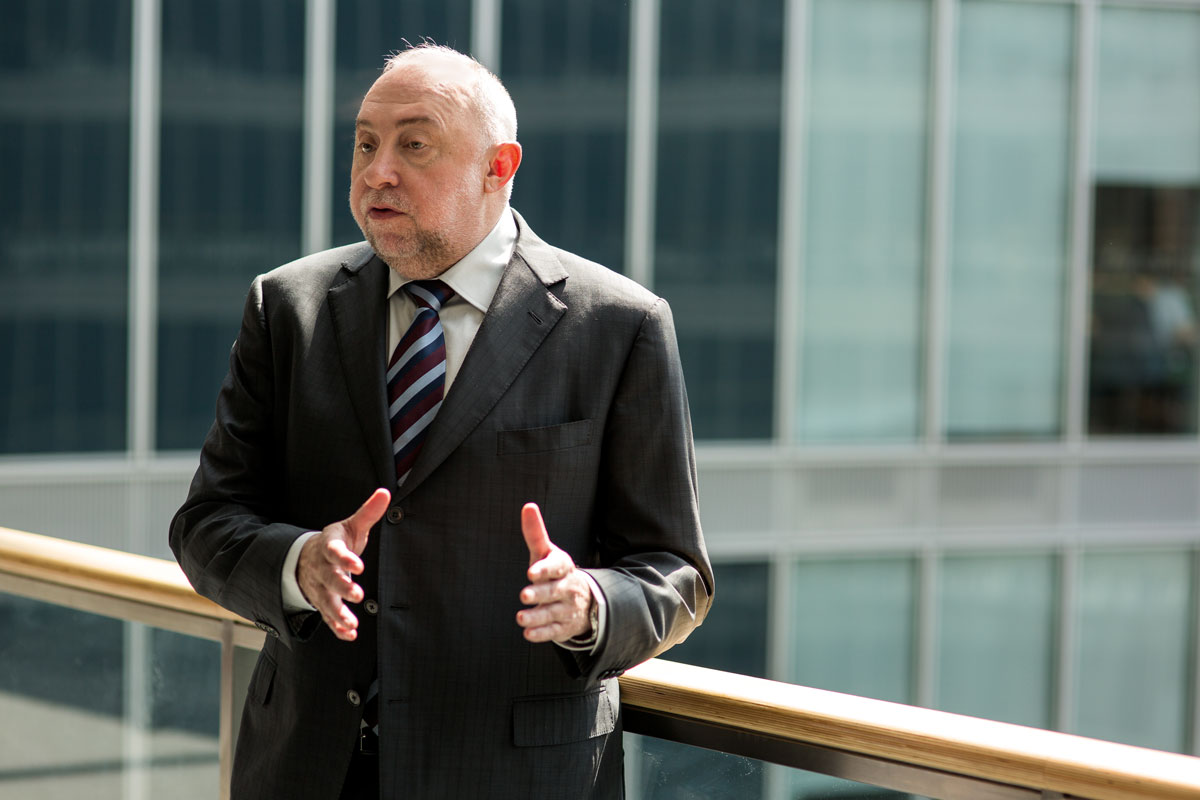Neil Anthony Morgan: Downstream Oil, positive operational result 132% higher than in Q1 2014
The modernisation of Petrobrazi refinery, completed last year, marked a milestone for OMV Petrom. What impact has this process had on the profitability target, what strategic priorities are envisaged and what investments are budgeted to this business sector in 2015 we have learned during the discussion with Mr. Neil Anthony Morgan, member of OMV Petrom Executive Board, in charge with Downstream Oil activity.
You have over 20 years of experience in refining & petrochemistry. What’s your view on the refining sector in Romania and on regional level? What’s the current balance between refining capacity and fuels demand?
The refining sector in Europe was already struggling overcapacity over the last decade. Since I joined Petrom, in 2008, 16 European refineries have been shut down. And until this year, when margins improved, refineries were operating in a very challenging environment. On one hand, there was the pressure of profitability: refining margins turned negative in 2010 and remained that way for almost five years, until the last quarter of 2014. On the other hand, there was a high need of investments as the European Union imposed new regulations on fuel quality and reducing pollution. Under these circumstances, many refineries could not afford to upgrade their facilities and had to shut down. Currently, we can still talk about excess refining capacity on the European market, but to a lesser extent than 10 years ago. Recent reports I have read indicate a rather grim future for the refining industry in Europe, estimating that refining capacity is to be reduced by another 16% by 2020. The additional pressure comes from newly built capacities in China, India and the Middle East, corroborated with stricter environment regulations in Europe which ultimately lead to an increased production cost. For example, starting 2015, Europe introduced a stricter limit (0.1%) for the sulphur contents of fuels used by maritime ships and envisage additional reduction of NOx emissions from diesel. At the same time, these limitations do not exist in other regions in the world: for example, in India, current fuel standards applicable are equivalent to Euro 3, while China plans to introduce regulations similar to Euro 5 in 2017. For me, as a citizen, it is good that I will be able to breathe cleaner air because of stricter environment standards. But as a manager of a refinery, I know that my costs will increase and I will require additional investments.
Considering the current international context, how do you think refining margins and fuels demand will develop in the following period?
In a low crude price environment, we can see a better performance of the refineries. Mid 2014, before the start of crude oil price decreases, European refining margins were at about 4 USD/barrel. Average margins are currently significantly above compared to summer 2014 and this brought a breath of air to integrated oil and gas companies, as good results from refining were able to compensate for the loss in revenue from upstream activities. However, the European refining margin is expected to come down, mainly due to the mentioned refining overcapacity in Europe. With regards to the fuels demand, there was an increase in fuel demand in Europe, especially gasoline, but it remains to be seen how much of these developments will consolidate on the longer term.
In terms of Romanian market, in the first quarter of 2015 there were indications of a gradual recovery of the fuels consumption, which was also reflected in the volumes we sold.
What’s your opinion on the dynamic of fuel prices in Romania and in the euro area considering the decrease in crude oil prices?
OMV Petrom’s price policy is based on international quotations for gasoline and diesel, is influenced by taxation and by local competition. Currently, taxes account for more than 50% of the fuel prices in Romania and the taxation level is comparable in most of the EU countries. The excise is an absolute amount tax, per liter and it remained unchanged over the last year. So price changes related to the international context could only affect 50% of the retail price. Also, quotations for gasoline and diesel decreased to a lesser extent compared to crude oil prices and this was partly offset by the depreciation of the national currency against USD, from 3.23 lei/USD to over 4.00 lei/USD. These are the facts that explain why fuel prices and crude prices did not decrease in a similar pace over the last year.
What’s the most important area in your segment of activity?
I see the company as a complex mechanical engine. Each activity is like a small wheel and plays its role for the whole mechanism to run. For OMV Petrom, times like these prove the value of having an integrated company. In the current crude oil context, it really helped that we had a modern refinery which was able to compensate for the loss of revenue from upstream activities, while over the last years, it was exploration and production which gave support in a weak refining environment. Right now, our main focus is on optimization of activities (reducing energy consumption and emissions even more) and gaining flexibility for the company in order to adapt quickly to market conditions.
What were the main benefits of Petrobrazi modernization program, finalized in 2014? What was the impact of the modernization on the financial results of the company?
Petrobrazi modernization was a very complex program initiated in 2010, which was finalized in 2014, after EUR 600 million investments. Basically, all major facilities in the Petrobrazi refinery were modernized or replaced, including the crude vacuum distillation unit, the cocker unit, the hydrogen plant, the desulphurization unit. The main objectives were to increase production of middle distillates and to reduce fuel consumption by 25%, thus resulting in a USD 5 increase in refining margin. Also, Petrobrazi refinery has the flexibility to switch between gasoline and middle distillate production. As of March 2015, the margin objective was achieved and the Downstream Oil division reported a positive operational result (EBIT) of 75 million lei, 132% higher than in the first quarter of 2014.
What will happen with the Arpechim refinery? What activities will be maintained here?
We are considering the idea of building a storage facility for crude and petroleum products at Arpechim. We currently notified the authorities of our intention and started the permitting process. We remain open if authorities manage to find another solution for Arpechim.
What measures do you envisage for increasing production and product quality, as well as reducing pollution levels?
Currently, Petrobrazi is able to process the entire production of OMV Petrom in Romania, which makes us 100% integrated company. After the modernization program, we no longer need to stop the refinery every year for maintenance, which improves our utilization rate. Fuel consumption in the refining processes decreased 25%, so, from a refinery using energy intensive technologies from the ‘80s, Petrobrazi is currently in the European benchmarks. As for product quality, all the fuels which get out from the refinery’s gates comply with European standards in terms of quality and emissions.
What is the share of investments in the downstream sector? What are the strategic priorities of OMV Petrom regarding the downstream sector? What is the investment budget for the next period?
Petrobrazi modernization was a major milestone for OMV Petrom downstream activities. In the near future, we cannot talk about a project of similar magnitude. However, we will continue to invest. One major project is the modernization of the Cluj fuel terminal, which will be finalized this year and will be an important logistic point for marketing and distribution activities in the western part of the country. Other smaller projects are related to upgrade and modernization of Petrom filling stations. The investment budget for Downstream Oil is expected to be around 100 million euro in 2015.







